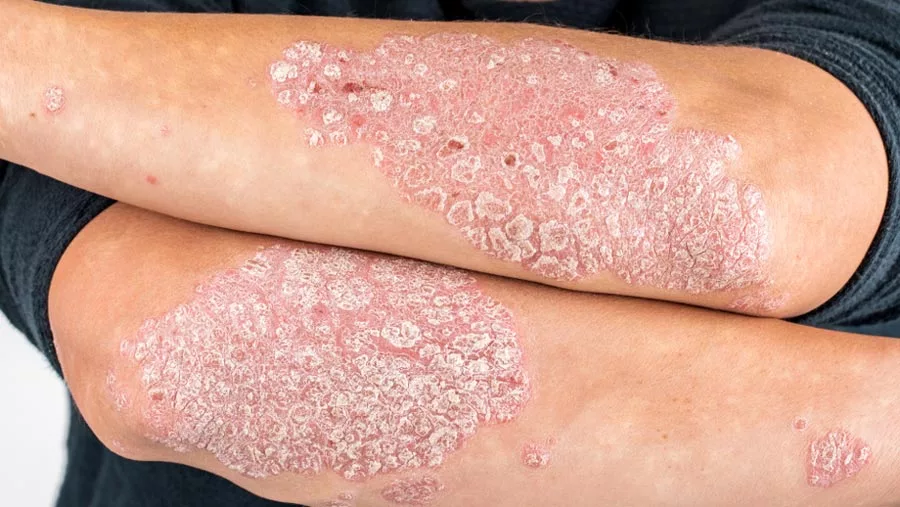Meth Sores

Meth Mouth, Meth Mites, and Meth Sores
All drugs have severe physical consequences at some point. Naturally, some are more severe than others. Some cause dry skin, some cause weight loss – some cause weight gain.
There’s one drug, however, that seems to have a more severe impact on users than any other drug on the market. Meth addiction ravages thousands of people each year, leaving them emaciated, mentally damaged, demoralized, covered in meth sores, and suffering from meth mouth.
What is it about crystal meth that makes users develop meth sores? What causes the decline in personal hygiene and how do meth sores form?
If you or someone you love is suffering from meth abuse, this article will help you understand meth sores and what it takes to treat them and potentially mitigate meth use.
Addiction Treatment that
Just Works
Individualized treatment programs delivered in a comfortable, relaxed setting promote healing in your recovery journey.
What Is Crystal Meth?
Commonly referred to as crystal meth, methamphetamine is a highly addictive stimulant. Its effects can make users feel like they have a huge amount of energy. It also causes users to have intense concentration and euphoria.
The effects of meth addiction can heavily influence different functions of the body and brain. For example, it leads to an immediate spike in heart rate and blood pressure.
Users can take methamphetamine in various forms, including smoking, eating, or injecting. Like other addictive substances, the use of methamphetamine increases the body’s tolerance level.
This causes people to use the drug more frequently in order to reach their desired result. The overall euphoria and bursts of dopamine and serotonin also trigger addiction. This is because the high that users get from this drug can trigger a variety of different feelings in the brain.
The Development of Meth Sores

You’ve probably seen an ad campaign detailing meth sores before. These are open wounds that appear on the body, especially the hands, arms, and chest. They are common symptoms of meth addiction.
The appearance of these sores is one of the most prominent signs that people are engaging in meth abuse on a regular basis. If you have used meth once or twice experimentally, you probably didn’t and won’t get meth sores. However, continuous use can cause them to develop, often causing people to confuse their outbreak with acne.
Although meth sores look like small wounds, they can develop into large open sores if they are infected or irritated. Most of the time, these sores are a byproduct of the chemicals used to create toxic meth. In addition, a weakened immune system and a lack of personal hygiene can also trigger meth sores.
How Do Meth Sores Form After Meth Use?
People who are addicted to meth dissolve the drug in water to prepare it for injection. This process allows the substance to escape through the body’s pores, leading to meth sores anywhere the person sweats or develops oily skin.
The high concentration of meth in the sweat on the face can irritate the skin. This causes open wounds for meth users, often taking weeks or months to heal. Skin picking is another cause of meth sores among meth users. They believe they have meth mites and attempt to remove them from the body.
The effects of meth sores are also noticeable on the lips and around the mouth. When people smoke meth, the pipe heats up, creating meth sores or blisters. The reduction of blood flow to the body is another side effect, leading to dry, flaky skin.
When the skin becomes dry, patches of it can become itchy, leading to the development of open meth sores caused by meth use. These meth sores can be found virtually anywhere – the hands, legs, face, arms – anywhere users frequently scratch the skin.
Meth Mites
For people who have engaged in meth use for extended periods, hallucinations lead them to believe they have mites or bugs under the skin. This type of hallucination is referred to as formication. Due to the presence of both touch and sight, the hallucinations seem incredibly real. This picking leads to severe meth sores, and can eventually even become life-threatening.
Formication hallucinations are so real, users will plead with people around them to believe them about their existence. This leads to more mental distress and further complicates the situation.
People who are under the influence of drugs often neglect their personal hygiene. These meth sores easily become infected. It’s important that users treat meth sores so they don’t develop into blood infections.
Other short-term treatment options include draining and manually treating them at a hospital or doctor’s office if they become boils or abscesses. However, this is only temporary, as they’re likely to return without treating the underlying drug abuse issues. This requires treatment for meth addiction.
Most users who develop meth sores and meth mouth have long-term problems with meth abuse. Treatment for meth addiction is one of the only solutions to this substance abuse issue. In some cases, users even develop physical withdrawal symptoms after quitting meth.
This is just another reason to seek professional help for meth use disorder.
Methamphetamine Abuse and Medical Detox

Withdrawal from methamphetamine can be different from one person to another. One person may kick the habit easily while another requires serious mental health treatment. However, it’s still important to seek medical assistance and supervision to manage your withdrawal symptoms. These can have severe mental health repercussions that cognitive behavioral therapy can mitigate if treated.
Some of the most common withdrawal symptoms include an increased appetite, craving, anxiety, and extreme paranoia. Although these are not life-threatening, severe withdrawal can lead to various other conditions such as depression and suicidal thoughts.
Although some of these symptoms will go away after a few days, they can still cause long-term effects that you need to deal with through the recovery process.
Even if the initial symptoms of withdrawal appear to be minor, it’s important to seek professional help.
If the withdrawal symptoms are severe, medical detox is the best course of action. You’ll receive constant monitoring from a professional medical team that can monitor your vitals and prescribes relief as needed.
The Benefits of Meth Addiction Treatment
Although medical detox can help you with physical discomfort, it’s also a significant stepping stone to mental health treatment. According to studies, those who participate in medical detox have much higher chances of successful recovery.
A large number of therapy options are successful in treating meth addiction These include cognitive-behavioral, family therapy, motivational therapy, and dialectical behavior therapy. The goal of these programs is to provide a safe environment for clients where everything is kept confidential.
The goal of this type of therapy is to help individuals develop a deeper understanding of themselves and their triggers. You’ll learn to better manage and navigate negative thoughts and situations that led to your meth abuse disorder initially.
Specific Forms of Medication Assisted Therapy

Currently, there is no FDA-approved pharmaceutical therapy for crystal meth withdrawal and detox. However, your doctor or medical provider may still prescribe a drug to help you cope with the withdrawal. Modafinil is a popular off-label choice for the treatment of meth users during detox.
Buproprion has also been used experimentally with positive results being reported. This actually helps decrease cravings and the urge to use. These are effective in treating meth withdrawal, but like with any other pharmaceutical therapy, risks are involved. Individuals who abuse meth and undergo off-label treatment are still at high risk of experiencing a relapse.
This is when the risk of overdose becomes dangerous. Clients who get clean for a short period and exit treatment only to relapse often pick back up with the same sized dose they used before. However, their tolerance level is much lower, and this can lead to a life-threatening situation.
It’s important that you continue with treatment even after the detox period – and even after inpatient or outpatient rehab. Aftercare services are vital, and Resurgence Texas can help you find 12-step programs outside of our facilities for continued support.
Long Term Recovery from Meth: Found Here
With a professional treatment team and personalized treatment plan, long-term recovery from meth is possible. If you or someone you love is suffering from meth addiction, contact a member of our admissions team today!
Addiction Treatment that
Just Works
Individualized treatment programs delivered in a comfortable, relaxed setting promote healing in your recovery journey.
